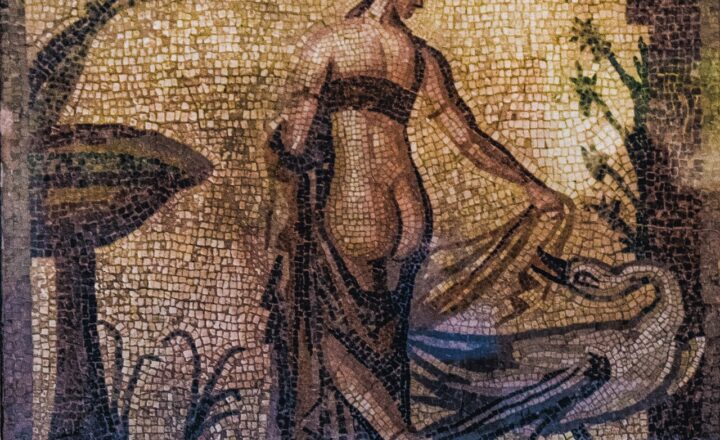
The Nazca Lines are a series of large ancient geoglyphs located in the Nazca Desert, in southern Peru. Spanning over 1,000 square kilometers, these enormous designs, which include various shapes such as animals, plants, and geometric abstractions, have fascinated archaeologists, historians, and travelers for decades.
Though they can be challenging to discern from the ground, the true magnificence of the Nazca Lines is best appreciated from the air, where one can see the intricate designs carved into the desert floor. Despite extensive research, the different theories surrounding their origins and purposes continue to provoke discussions and allure those intrigued by one of the world’s greatest archaeological mysteries.
1. A Brief History of the Nazca Lines
The Nazca Lines were created by the Nazca culture between 500 BCE and 500 CE, although some researchers believe that the earlier Paracas culture (around 900 BCE) may also have played a role in their formation. The Nazca civilization flourished in the arid region of Peru, developing a rich culture that included textiles, pottery, and advancements in agriculture, particularly aquaculture.
The lines were first discovered in the 1920s by archaeologists and pilots flying over the area. However, it wasn’t until the 1930s that the full scope of the designs was understood; amateur archaeologist Paul Kosok recognized that the lines formed intricate shapes, stretching for miles, urging further investigation.
2. What Are the Nazca Lines Made Of?
The construction of the Nazca Lines involved removing the top layer of reddish-brown iron oxide-coated pebbles to reveal the lighter-colored earth beneath. The contrasts in color create the designs visible from above. Though the lines appear massive and elaborate, they are surprisingly shallow, averaging only about 10-15 cm deep. The precision required to create these lines is astounding, given the technological limitations of the time.
While most of the designs are straight lines, which can extend for miles, some figures such as the hummingbird, monkey, and condor showcase the civilization’s artistic minimalism and precision.
3. Theories on the Purpose of the Nazca Lines
Many theories have been proposed regarding the purpose of the Nazca Lines, and no single explanation has been conclusively proven. Some of the most prevalent theories include:
- Astronomical Calendar: Some researchers propose that the Nazca Lines functioned as an astronomical calendar, built to mark solar and lunar events. The alignment of certain lines and figures corresponds with various celestial events, suggesting the ancient Nazca people may have sought to track agricultural cycles or participate in rituals linked to their gods.
- Religious Rituals: The idea that the Nazca Lines were created for religious or ceremonial purposes is often discussed. Scholars speculate that the figures may have been offerings to the gods, a way of communicating with the divine, or rituals to ensure good harvests and water supply.
- Water Cults: In one theory, the Nazca people developed water cults, and the lines were pathways to guide ceremonies or rituals associated with water sources. Given the harsh desert environment, water was critical for survival and agricultural practices, making it a vital component of their society.
- Artistic Expression: Another theory suggests that the lines were simply artistic expressions of cultural identity, showcasing the community’s creativity and craftsmanship. Artifacts from the area indicate that the Nazca people held a strong aesthetic sense, which could have played a role in their desire to create such monumental artworks.
While the true purpose of these massive geoglyphs remains elusive, they continue to inspire awe and wonder.
4. The Nazca Lines Today: Conservation Challenges
In recent years, the Nazca Lines have faced threats from human activity. Increased tourism has sparked concerns about potential damage due to vandalism and environmental degradation. As vehicles travel through the region, some advocates argue that the lines are suffering irreversible damage that could obscure important cultural heritage for future generations.
In response, the Peruvian government has taken measures to preserve the lines and limit access. Surveillance and regulations have been implemented to prevent locals and tourists from damaging the lines, while UNESCO has designated the area a World Heritage Site, helping to raise awareness and support for ongoing conservation efforts.
Local guides continue to offer tours over the area in small aircraft, allowing travelers to appreciate the beauty and mystery of the lines while supporting efforts for preservation and education.
5. Conclusion: A Lasting Legacy
The Nazca Lines remain an enduring symbol of the ingenuity and creativity of the ancient Nazca civilization. Despite centuries of intrigue and speculation, their true purpose may continue to elude us. Each new discovery reveals more about their possible functions and meanings, while they serve as a reminder of the rich cultural history of Peru and the artistry of those who created them.
As we look to the future, preserving the Nazca Lines is crucial for ensuring that this remarkable heritage can be appreciated by generations to come. The allure of the Nazca Lines continues to thrive, inviting scholars and enthusiasts to ponder their mystery and legacy.
Sources
/1. To access more information about the Nazca Lines, check scientific journals, detailed cultural studies, and resources from the Peruvian Ministry of Culture. /2. Would you like to explore the lines in person? Book a tour with a local guide to gain first-hand experience of this ancient wonder!







